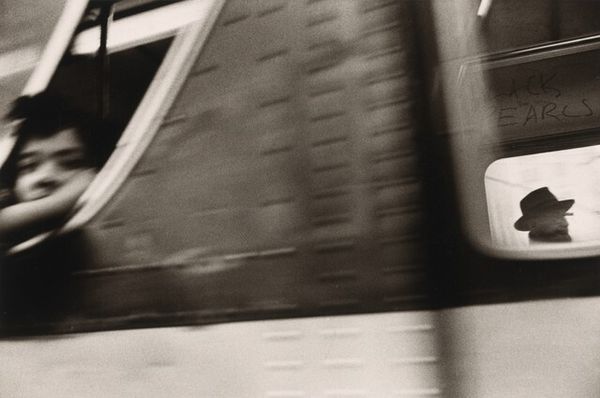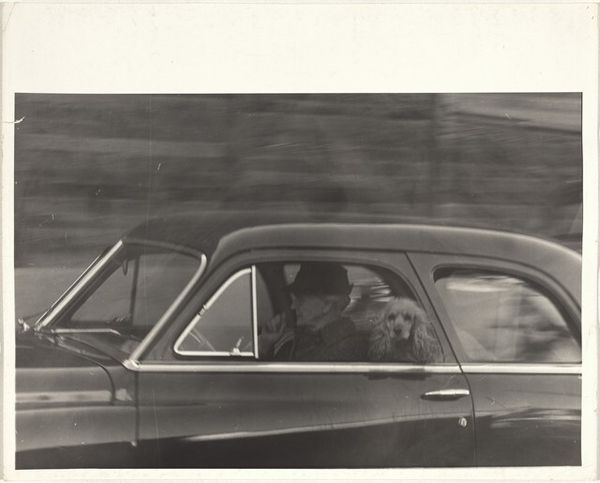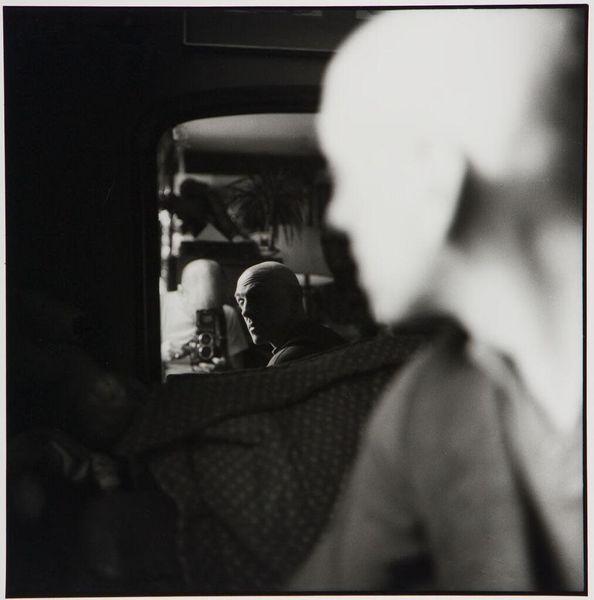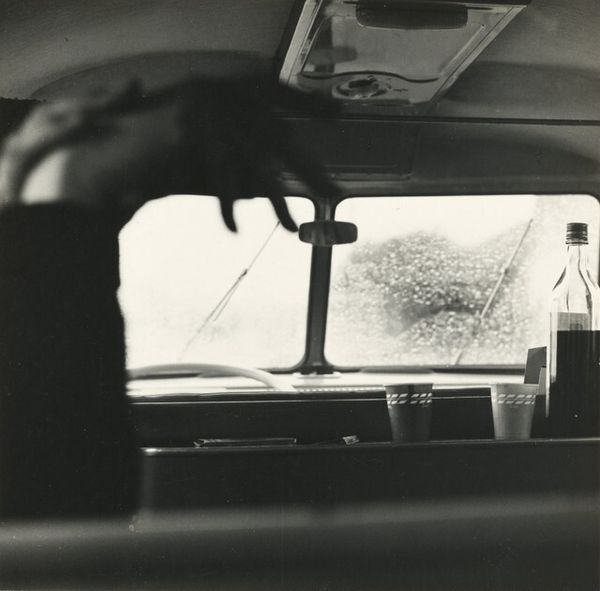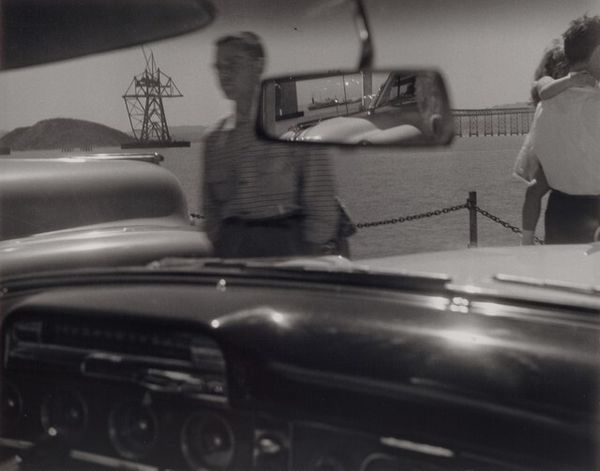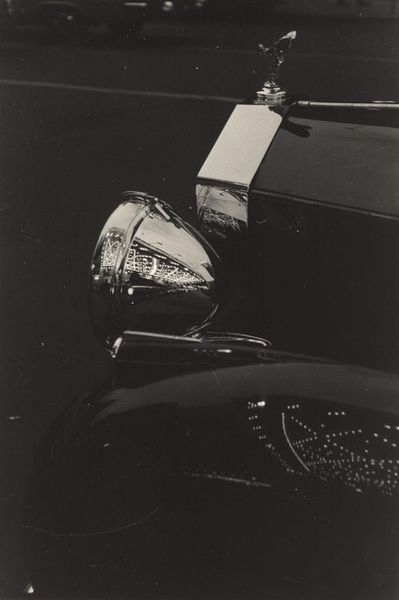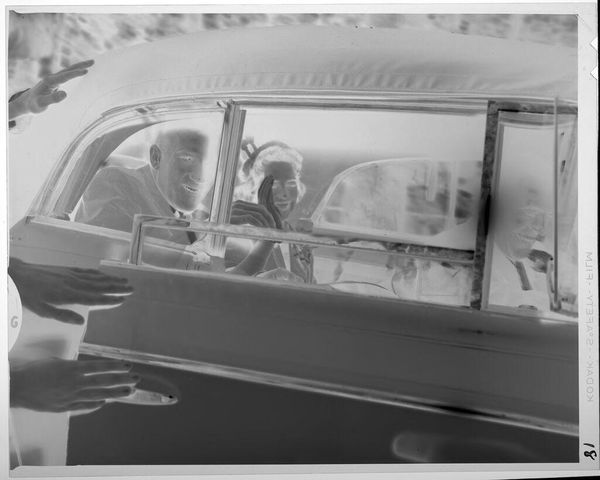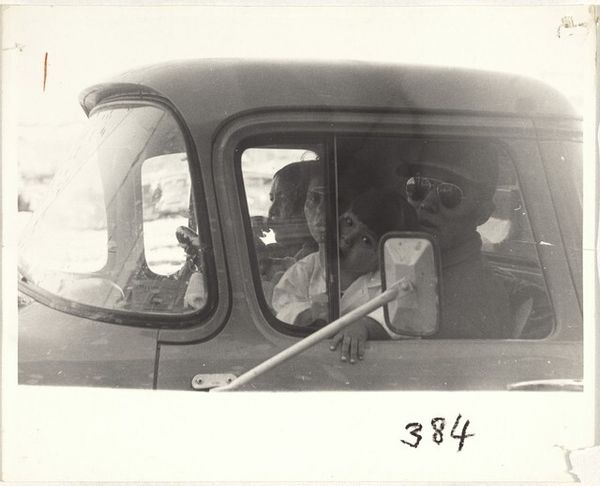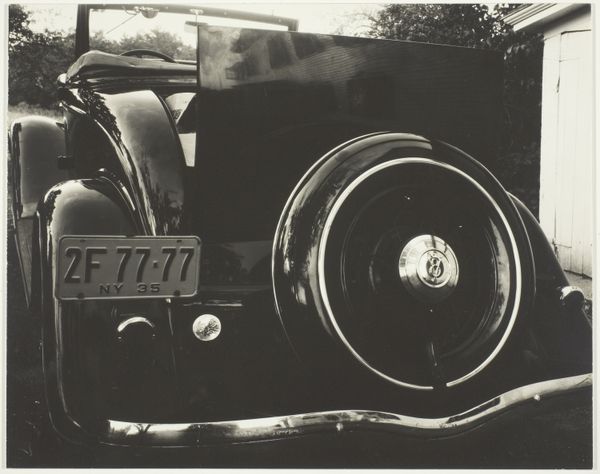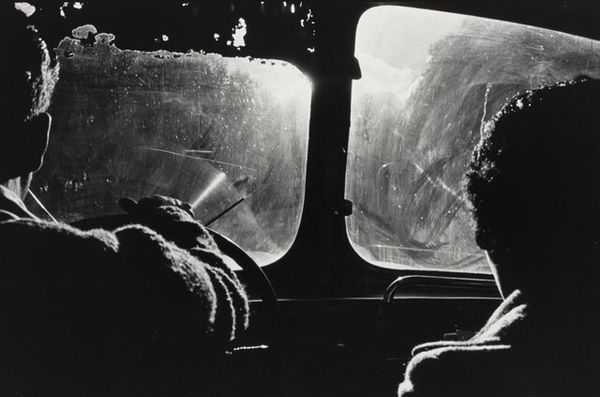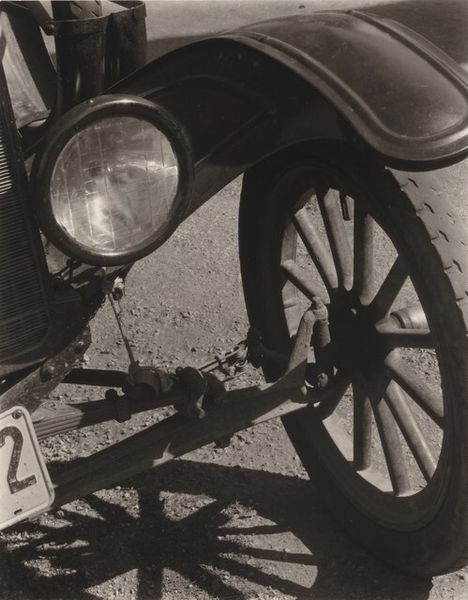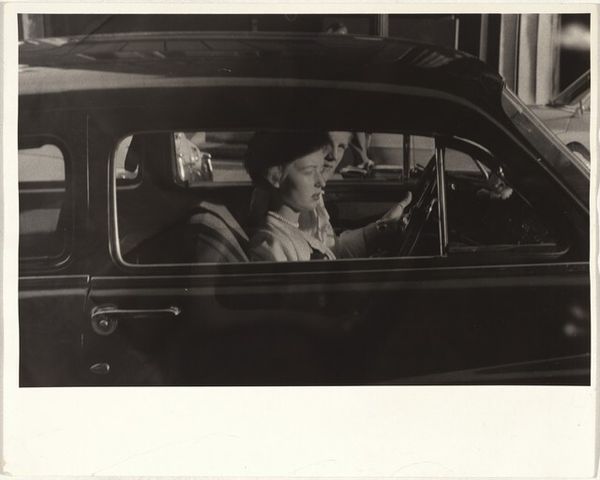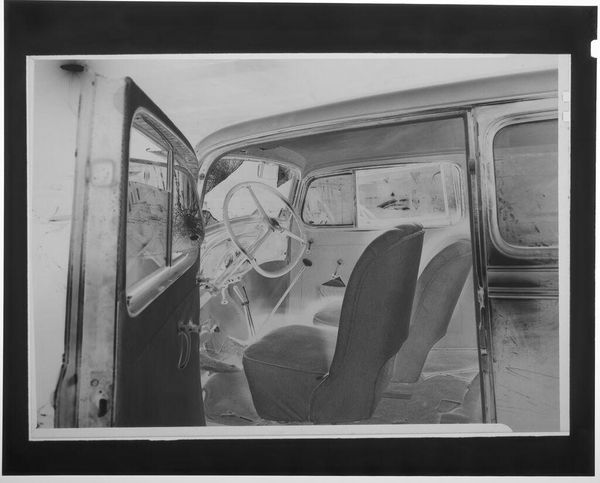
Funeral cortege, San Joaquin Valley, California c. 1938 - 1959
0:00
0:00
photography, gelatin-silver-print
#
portrait
#
social-realism
#
photography
#
black and white
#
gelatin-silver-print
#
ashcan-school
#
genre-painting
#
monochrome
#
realism
#
monochrome
Dimensions: image: 20 × 19 cm (7 7/8 × 7 1/2 in.) sheet: 25.08 × 20.32 cm (9 7/8 × 8 in.)
Copyright: National Gallery of Art: CC0 1.0
Curator: Dorothea Lange’s gelatin-silver print, “Funeral Cortege, San Joaquin Valley, California,” made sometime between 1938 and 1959, captures a moment of somber reflection. What's your immediate impression? Editor: A profound sense of melancholy. The confined space of the car window, framing a face etched with worry…it's visually arresting, almost theatrical in its starkness. It recalls classic tragic theater masks of grief. Curator: Indeed. Let's consider Lange's method. The gelatin-silver process allowed for sharp detail, emphasizing the texture of both the vehicle and the sitter's face. Look at the polished, almost grotesque ornamentation of the hearse versus the human fragility mirrored within. There’s an inherent tension in this contrast, reflecting socio-economic disparities inherent even in death. Editor: Absolutely. That ornate frame is telling. Note, too, the hand held to the mouth, a universal symbol for holding back emotion, or even stifled speech. Considering this was taken during or after the Dust Bowl era, there’s a deeper cultural resonance here – representing a community, a generation, perhaps rendered voiceless by circumstance. Curator: The material reality supports that reading. This isn’t just any cortege; it's one happening during an era of immense agricultural upheaval in the San Joaquin Valley. Lange, known for her Depression-era work, was keenly aware of the economic and social structures that led to such suffering. Her focus on materiality forces the viewer to acknowledge the human labor intertwined with agricultural disaster. Editor: The funeral itself becomes a potent symbol, then, reflecting not just personal loss but a larger societal demise—lost opportunities, lost lands, perhaps even a lost way of life. Curator: Precisely. It speaks volumes about collective trauma through the simple composition, really bringing into question what constitutes acceptable human treatment and if anything actually changed in the decades following the Depression. Editor: Thinking about Lange’s place as an observer, documenting events, makes me realize she captured an eternal image of grief, a moment of introspection mirrored across generations. It’s more than social realism; it’s a stark look at shared humanity facing inescapable ends. Curator: Agreed. By attending to both the materiality of the moment and the embedded iconography, we reveal the intertwined stories of loss.
Comments
No comments
Be the first to comment and join the conversation on the ultimate creative platform.
